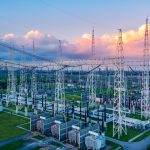Unveiling the Particularities of Substation Equipment for Seismic and Structural Performance
Understanding the particularities of substation equipment is crucial in the realm of power distribution. This article dives into a specific aspect often overshadowed – the design considerations that differentiate equipment from conventional civil structures.
- Design Goal
Civil Structures and Substation Equipment diverge in their primary design goals, reflecting distinct priorities in regards to safety and functionality. In the design of civil structures, paramount emphasis is placed on human safety and well-being. Structural engineers strive to create buildings and infrastructure that can withstand various environmental stressors, ensuring the protection of occupants during natural disasters such as earthquakes or extreme weather events. On the other hand, substation equipment is engineered with the focus on facilitating continuous and reliable power distribution especially during natural disasters, where the demand for energy becomes vital. While both civil structures and substation equipment contribute to the overall infrastructure, their design objectives align with different facets – one centered around human safety and the other committed to continuous functionality.
- Structural Materials
While concrete and steel stand out as prevalent structural materials in civil engineering, substation equipment relies on a mix of porcelain, composite materials, and various metals to fulfill both structural and functional necessities. The application of these materials often necessitates custom strength tests to showcase their performance, and their behavior may exhibit pronounced anisotropic behavior. This diverse material selection underscores the tailored approach required to meet the unique demands of substation equipment, ensuring optimal structural integrity and functionality.
- Hazardous Substances
Different substation equipment incorporates either hazardous substances like SF6 gas and oil or seemingly safe agents that can become inflammable or explosive under high temperatures or pressure, posing risks to the environment and potential widespread damage. The design of substation equipment must meticulously consider the influence of these factors to securely ensure the structural integrity of the equipment, especially during earthquake events. This ensures a robust approach that prioritizes safety and minimizes potential environmental and structural risks.
- Qualification Requirements
The seismic design of equipment may necessitate advanced dynamic analysis or rigorous shake-table testing, methods typically uncommon in the structural design of civil structures. These qualification approaches demand a profound understanding of the specific design and functional purpose of the equipment, involving significant efforts and specialized hardware.
- Modular Design Strategies
Modern substation designs often adopt a modular approach to enhance seismic resilience. Decoupling components and utilizing flexible connections help absorb seismic forces, thus reducing the risk of damage. Additionally, modular designs facilitate easier post-earthquake inspection and maintenance.
- International Standards
Adherence to global standards such as IEEE 693 and IEC is paramount in substation design, differentiating it from the use of national civil standards and their requirements. Such norms offer comprehensive guidelines for the seismic design and qualification of equipment. Engineers and manufacturers adhere to these standards to tackle seismic challenges for different geographical regions. Moreover, harmonizing and aligning equipment requirements with civil standards, particularly in the context of connecting equipment to buildings and other civil structures, is essential for avoiding overly conservative design practices.
Conclusion
In essence, while civil structures face their own seismic challenges, substation equipment demands a specialized approach. The power industry’s dedication to robust engineering and compliance with international standards ensures that substations remain steadfast in their role of powering communities, even in the face of seismic challenges.
Exploring these technical difficulties is essential for anyone involved in power infrastructure and engineering.



Leave a Reply